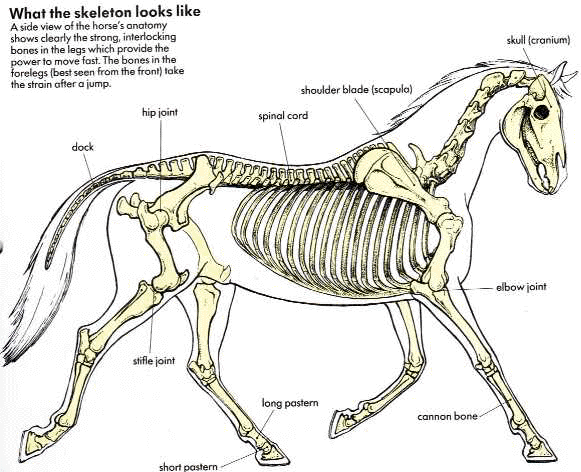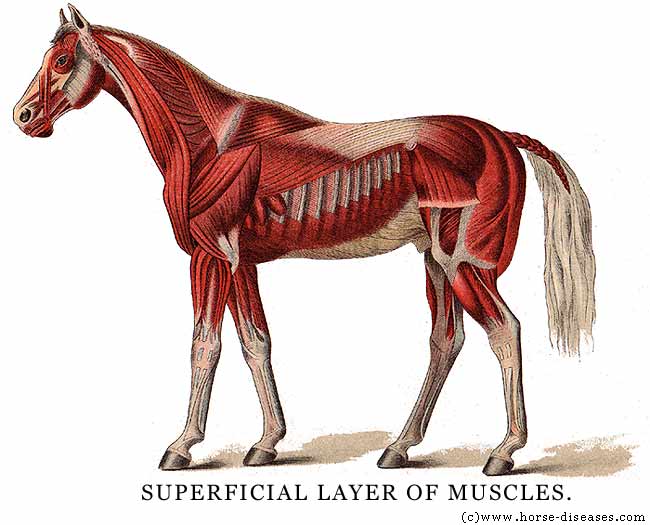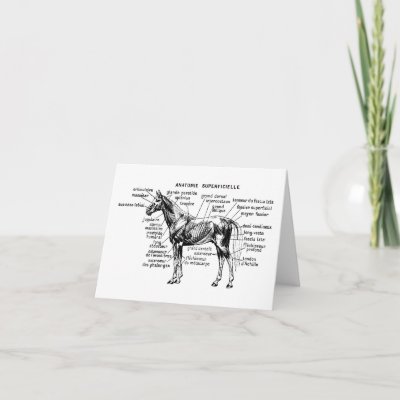DAPNET Forums Archive › Forums › Draft Animal Power › Working with Draft Animals › Draft buffers
- This topic has 197 replies, 14 voices, and was last updated 13 years, 7 months ago by
dlskidmore.
- AuthorPosts
- April 19, 2010 at 1:16 am #58031
Tim Harrigan
ParticipantThanks, Kevin. I had not seen that site but I think they are a variation of the Pinney spring buffers that John mentioned. It would be interesting to test them but a bit pricey at $165/pair plus shipping.
April 19, 2010 at 1:36 am #58032Tim Harrigan
ParticipantCarl Russell;17613 wrote:How would you guys feel about me approaching RH or SFJ about publishing this thread?
CarlI guess if it contributes to discussion and continued education of the broader community of interest it advances the main benefit of DAP. Any proceeds could support continued availability and access to the site.
April 19, 2010 at 2:45 am #58073Andy Carson
ModeratorPublishing is fine with me too… I think it’s a fascinating discussion. Like alot of reasearch, it seems that a simple question led not to a simple answer, but to many more questions. The jury is still out on whether this whole spring buffer provides any positive benefit, but if it does, than I do not see the variability of the work load being a huge problem. I think that adjusting the preload lets it work in a decent range of loads (the one I made should work from about 300-500 pounds). In my mind, pulls under this might be easy enough that there is little reason to buffer. If there was only a slight increase in efficiency, you might not want to bother buffering loads over this weight, as the horses are probably not going to pull them for that long. Of course, there might be more of a benefit… It seems to me that the main question is whether the spring or the horses weight shifting is more efficient, and if there is much of a difference. Again, the jury is still out on that…
April 19, 2010 at 2:51 am #58074Andy Carson
ModeratorOh, Tim, do you know if oxen vary in thie draft loads to the same extent that horses do? If they have a variable pull as well, maybe the spring could be tested on your team at your place. I wouldn’t mind mailing the spring to you for testing and we wouldn’t have to wait until June to see what happens… I think I’m going to take your suggestion and shorten the thing too.
April 19, 2010 at 2:52 am #58123mitchmaine
Participantwe’ve probably all seen the twelve hitch three up pulling the four bottom plow at horse progress days. for the benefit of someone who hasn’t it’s basically a set up of ropes and pulleys connecting the lead and swing horse with a nylon rope and a single pulley and the pulley force transfers back to a double set of blocks to the wheel horse balancing them all against the load. regardless of how many abreast they all pull and balance against each other and as a unit pull the load. my question to any and all is has there ever been a test between a team on an evener and the same two horses unicorn on rope and pulleys to the same load? just wondering. it “feels” like the rope and pulleys are a buffer but cannot prove it.
April 19, 2010 at 4:05 am #58057blue80
Participantjust a thought I’ve been having, are there not a couple/few different buffers that should be evaluated, possibly being;
1/ commencing a load, particularly a heavy load under low traction conditions or where there may be some suction type forces on the implement or wagon. ie. the redneck side of me loves to pull people’s cars out of the ditch, especially when someone else has already tried to do so with big fancy tired 4wd and a chain, the tow vehicle on icy surface. I like to back right up to their bumper (and watch their eyes get real big, their nuckles go white, rev the motor a few times for good measure;)) and then hammerdown the throttle, with a nice nylon strap; and slingshot that car right up onto the road without damage.:D So my question is, would a spring/nylon accessory in the trace help “hard starts” with large logs, stuck wagon etc. or would the draft power and buffer absorb the power before the load gets moving and discourage the draft power from continuing through the pull? I will have to check out some of the past data to try to answer my own next question, “how much more draft is needed to commence work on non wheeled vehicles than to do it continuosly.” And I figure it depends on the work being performed, traction, slope conditions etc….
2/”normal” working loads which has been mostly discussed on this thread,
3/emergency/unseen spikes in draft due to obstacles, equipment failures etc. which I gather tends to be the consensus for practical use of preloaded springs.
Not to mean these different buffers should all be solved for every situation, however I believe evaluating each separately will help me understand the effective load conditions both on the equipment and draftpower thereby being a better “tuned teamster” That is, in tune with all the forces at work. What I am trying to say is that although I don’t understand all the physics, this thread will be one I will reread as time goes on and enable me to better understand how to work effectively and show the most care for the animals in the process.
Thanks to all doing such great work on this!Kevin
April 19, 2010 at 5:20 am #57988near horse
ParticipantFirst, thanks for your supportive words – all of you. I guess sometimes I wonder if I’m even on the same page as everyone else but then there’s that glimmer of something that makes me want to speak up.
So, I do appreciate Andy’s “preloaded spring” which I interpret to mean you have compressed the spring to one degree or another and the buffering effect would come from any force large enough to relieve some of the preload (allowing spring to extend towards its “normal position”). This is opposed to the alternative which is a spring in its “ready or normal state” (not compressed) which is stretched beyond the normal state when placed under a load. How do those 2 systems differ? Is it just easier to calibrate as well as have multiple settings from the preloaded spring or is there something more?
Regarding the tendon, ligament, muscle thing – I’m pretty positive that only muscle tissue has the ability to contract. BUT those muscles can stretch ligaments or put them under tension so that there is some energy stored there momentarily. For example fast runners, including horses have interesting combinations of muscles, tendons and ligaments that provide them the ability to run fast. If you’ve ever watched a cheetah or a cat run, the flexible spine forms an arch shape as the hind limbs move forward (way forward on cheetahs etc) – this is achieved through contraction of various muscles (perhaps abdominals). Then as the hind legs hit the ground and propel the animal forward, the back muscles rapidly contract shortening the back but extending the underside (reaching out with the fronts). In addition, when the spine was originally arched, a ligament or series of ligaments along the back were stretched (kind of like our spring). The energy “stored” up in the ligament by virtue of its being under tension is released as those back muscles contract – this system is pretty similar in horses although they don’t have as much spinal flex as cats.
Man I better go to bed now.
April 19, 2010 at 12:03 pm #58033Tim Harrigan
ParticipantCountymouse;17622 wrote:… maybe the spring could be tested on your team at your place. I wouldn’t mind mailing the spring to you for testing and we wouldn’t have to wait until June to see what happens…That might work. I am trying to make it work with new software right now, if I get it working reliably I will let you know and we can work it out.
April 19, 2010 at 12:39 pm #58137jac
ParticipantCart Horse Machinery was started by the late Charlie Pinney and.. I think… Chris Townsend.. Mr Townsend was/is the engineer and Charlie went to him with his ideas. His hitchcarts are being built in the States under licence by a company who’s name I cant remember right now…
JohnApril 19, 2010 at 12:47 pm #57970Carl Russell
ModeratorJust to clarify, tendons attach muscle to bone, and therefore facilitate movement. They are inelastic, but flexible. Ligaments attach bone to bone, or cartilage, holding joints together.
Tendons are cords of connective tissue attaching muscle to bone, cartilage or other tendons. They are a major contributor to shock absorption, are necessary for support of the horse’s body, and translate the force generated by muscles into movement. Tendons are classified as flexors (flex a joint) or extensors (extend a joint). However, some tendons will flex multiple joints while extending another (the flexor tendons of the hind limb, for example, will flex the fetlock, pastern, and coffin joint, but extend the hock joint). In this case, the tendons (and associated muscles) are named for their most distal action (digital flexion).
Ligaments attach bone to bone or bone to tendon, and are vital in stabilizing joints as well as supporting structures. They are made up of fibrous material that is generally quite strong. Due to their relatively poor blood supply, ligament injuries generally take a long time to heal.



Just thought I’d post a few images. I couldn’t find one yet that shows the anatomy of where the muscles attach to tendons etc.
Carl
April 19, 2010 at 2:06 pm #58075Andy Carson
Moderator@near horse 17626 wrote:
So, I do appreciate Andy’s “preloaded spring” which I interpret to mean you have compressed the spring to one degree or another and the buffering effect would come from any force large enough to relieve some of the preload (allowing spring to extend towards its “normal position”). This is opposed to the alternative which is a spring in its “ready or normal state” (not compressed) which is stretched beyond the normal state when placed under a load. How do those 2 systems differ? Is it just easier to calibrate as well as have multiple settings from the preloaded spring or is there something more?
The spring I am using is a compression spring set up to be compressed upon loading (look up a few images of a “drawbar spring”). If there was no preload on my spring, it would move 1 inch if 119 lbs pull was applied. With “horse sized” forces, this means it would always be compressed to one degree or another and would change rapidly in response to changes in terraign, etc. As almost any force was responded to at low preload settings, the system buffers unpredictably. If the spring was compressed 4 inchs, than the spring would not more at all unless the force exceeded 476 lbf (4*119), and would move 1 inch at 595 lbf. In second run I did, the force exceeded the preload only during times when the terraign was at least a little rough and the horse was in the middle of the “powerstroke.” In short, it only stored energy from moments where force was very high, which are exactly the areas I was targetting. As “very high” will vary from one job to the next, adjusting the preload gives you a way to adjust the threshold at which the spring will begin to store energy. This is one advantage. The other advantage is that a preload means the spring is less likely to respond to the small chaotic changes in draft force can lead to “swinging” and unpredictable buffering. One might think that you could “dial in” a different preload for every different job, but the math doesn’t support this. If my spring I was using was compressed 6 inchs, for a 714 lbf preload, it would only have about one more inch to more before the spring bottoms out. This could be solved with a longer spring, but even if the spring didn’t bottom out, the energy would be released too slowly to be effective. The math supports the idea that you would need a different spring rate (like 200 lb/inch) for this application. So, for big differences, you would have to change springs, but the preload can be adjusted for small differances within a specific range.
April 19, 2010 at 2:29 pm #58076Andy Carson
ModeratorI think Kevins point is a good one, there are many factors and situations these buffers could help with, but I am not sure how to go about testing each individually (or even if this is possible). The factors or situations that seem most intersting to me are:
1. Buffering the starting of a load
The Spring really seems to help with this and I think it makes sense that they should, as this is an areas with a great number of very high peaks in draft. Tim’s system should be able to tell us whether the spring helps here. Honestly, I had not been designing this to help start loads, but it seems that this would be useful to alot of people too.2. Reducing maximum draft
By my measurements, max draft force is reduced by the spring buffer. I just don’t know if the consequences of this are important.3. Substituting for the animals natural buffering system
It seems that the spring, over the long term, might act as a substitute for the natural buffering system of the animal. Steel springs are extremely efficient at storing and releasing these forces and I think the best an animal could do would be to tie the spring’s efficiency. Judging from the speed vs force data, it seems that animals are not very efficient and I am hoping this might be where improvements in working load can be achieved. If the animal has learned to use thier own weight and gravity as a buffer, than the speed with which that energy is released would likely be constant (gravity is more properly an acceleration rather than a force). If the speed of the load and the speed of energy release are very different, than it could lead to substantial losses that could be improved upon by the spring. Measuring the average draft would tell us if this is working.4. Smoothing forward speed
The spring definately does this, and I think this could be useful for some applications.5. Improving animal comfort or balance
Maybe the reduced head bobbing was due to improved balance when the spring was used, which it seems would lead to improved comfort. I’m not really sure how to measure this though…6. Shock load protection
Even though the sprin I made is not designed for shock protection, it should provide some protection and is likely better than nothing. This is not unlike “reducing maximum draft” and could be tested int he same way.April 19, 2010 at 4:17 pm #58077Andy Carson
ModeratorI read an interesting research paper entitled
“THE RELATIONSHIP BETWEEN MECHANICAL WORK AND ENERGY EXPENDITURE OF LOCOMOTION IN HORSES” by MINETTI, ARDIGÒ, REINACH, AND SAIBENE.
Perhaps those interested can google it and see for themselves, I do not feel comfortable copying things from it onto a public site…
When they measured the capcity of a horse to store and release energy at the walk, they found that the horse was between 10-40% efficient. This is pretty much in line with the 33% efficiency I had calculated from Tim’s force and velocity numbers. It seems there really is alot of wasted energy there!
April 19, 2010 at 7:50 pm #57989near horse
ParticipantHey Andy,
Do you have more of the citation for that paper? Where (which journal) published in … NEVER MIND – J. of Exp Bio. As I mentioned in a different thread somewhere on DAP, there was a paper back in the early 80’s called “Why Horses Change Gait” – had a nice graph of speed vs energy expended. As horses increased their speed, they could only reach a certain threshold before increased energy expenditure gave no increase in speed. Changing gait, say from a walk to a trot, allowed the increased speed for a significantly lower energy expenditure – kind of the “point of diminishing returns” concept.
April 19, 2010 at 7:57 pm #58078Andy Carson
ModeratorSorry Geoff, it’s in the Journal of Experimental Biology, Vol 202, Issue 17, pages 2329-2338. I was refering to figure 7. The weakness of this (for our purposes) is that the horse is not pulling a load. I suspect without a load, a horse has very little interest in conserving energy and it might be unlikely that they would be motivated to learn… I also found it interesting that the more suspended the gait is, the more energy could be stored and returned. A gallop stores and returns about 90% of the energy, but that requires very drastic movements on the part of the horse and doesn’t really have that much to do with our discussion…
- AuthorPosts
- You must be logged in to reply to this topic.